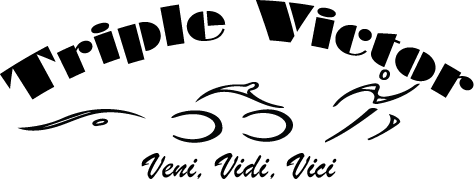Principle of Individuality #
A training program must address the person’s physiological needs; training is not a one-size-fits-all process. Everyone is different and responds differently to training. A person’s ability to absorb training varies with influences from genetics, muscle fiber types, biological age, athletic age, and mental state, among other factors.
As the training duration increases for a specific event, the level of individuality increases. For example, a basic 10-week training plan for a 5ka may work for most athletes, while a 30-week training plan for an ultra marathon may leave some athletes overtraining, some undertraining, and others injured.
Principle of Reversibility #
The reversibility principle defines the loss in function experienced after the cessation of a training program. Regardless of the gains in fitness achieved through a regular exercise program, those improvements will be reversed to pre-training levels and may ultimately decrease to the point that meets only the demands of daily use. For example, research shows athletes must complete a minimum of two training sessions a week to maintain aerobic performance.
Principle of Specificity #
Athletes must train in a specific manner to produce specific adaptations to imposed demands (SAID). Specificity refers to aspects such as muscle recruitment and movement patterns. The principle of specificity does not demand that training mimic the sporting skill. Still, the more similar the training activity is to the sport’s movement, the greater the likelihood that there will be a positive transfer to the sport.
For example, a runner will perform skipping drills that do not mimic running to reinforce landing, cadence, and coordination. The principle of specificity becomes clear when looking at how individual sports experience ever-increasing competitiveness from season to season. It isn’t that today’s athletes are more talented; it is that coaches have honed the ability to develop highly-specialized training that better prepares athletes for the unique demands of their sports.
Principle of Overload #
A training load must generate a training stimulus great enough to elicit adaptation without fatiguing the athlete before reaching the required stimulus. The overload principle works in concert with progression. An athlete must get off the couch and run for a couch to 5k program. However, the first run may only require a few hundred meters to elicit an adaptation. To run the 5k race, the athlete must build up distance over repeated sessions to improve muscle adaptation and soft tissue strength/resiliency. Any demanding exercise attempted too soon risks injury. The same principle holds for strength and power exercises.
Principle of Progression #
Training must gradually and constantly increase for continued gains in performance. Athletes and coaches can view this from both a technical skills standpoint as well as a training load standpoint.
This implies that an athlete must have an optimal progression for the overload to occur. If overload increases too quickly, poor technique, improper muscle firing patterns, and injury may result. If overload progresses too slowly, improvements will be minimal or non-existent. Rest and recovery must also be included in the progression, as training hard all the time could result in chronic fatigue, a decrease in performance, and eventually injury.
For example, to swim 2.4-miles, an athlete will perfect the swim skills of body position, breathing pattern, and swim stroke well enough to complete the distance while building the muscular endurance to repeat the necessary motions enough times to finish.
Principle of Diminishing Returns #
When an athlete begins training, fitness improves rapidly, but as the athlete adapts, they will experience a slowing of improvement from their training. As athletes near their genetic potential, the gains in performance will be much harder to obtain.
For example, a new triathlete may improve their functional threshold power from 200 watts to 250 watts in their first training season. It may take multiple seasons to improve from 250 watts to 300 watts.






Responses